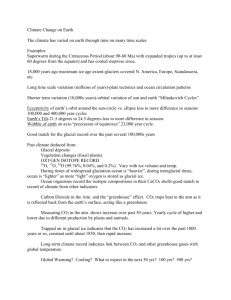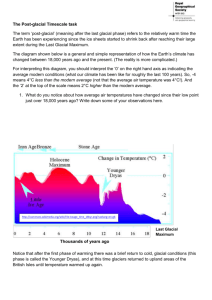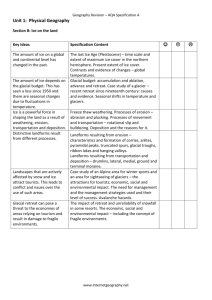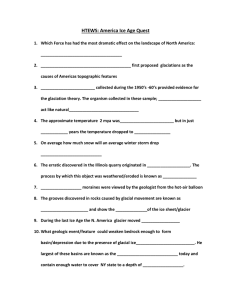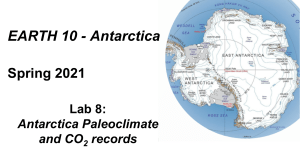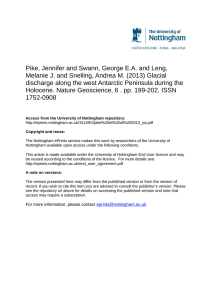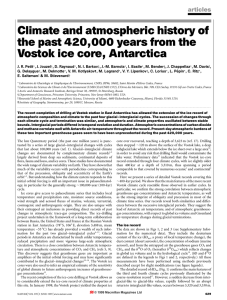– Climate Towards a Transient, Coupled 3D Ice Sheet M. Heinemann
advertisement
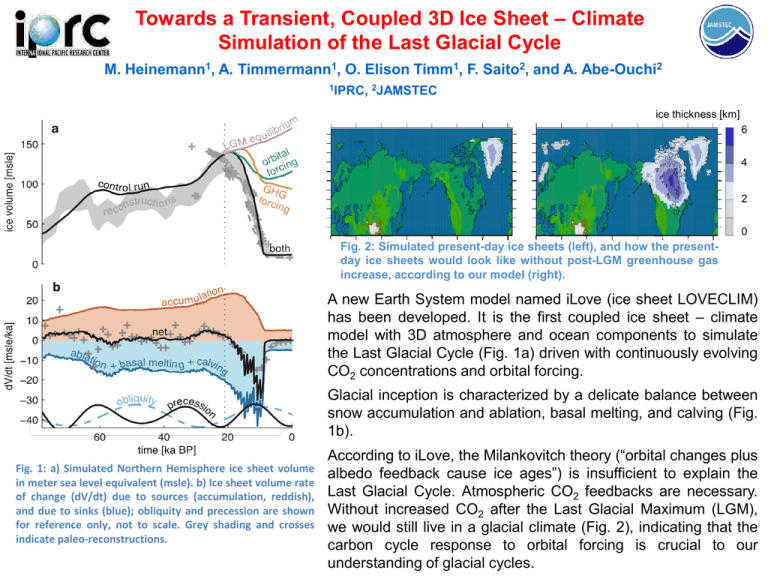
Towards a Transient, Coupled 3D Ice Sheet – Climate Simulation of the Last Glacial Cycle M. Heinemann1, A. Timmermann1, O. Elison Timm1, F. Saito2, and A. Abe-Ouchi2 1IPRC, 2JAMSTEC ice thickness [km] 6 4 2 0 Fig. 2: Simulated present-day ice sheets (left), and how the presentday ice sheets would look like without post-LGM greenhouse gas increase, according to our model (right). b A new Earth System model named iLove (ice sheet LOVECLIM) has been developed. It is the first coupled ice sheet – climate model with 3D atmosphere and ocean components to simulate the Last Glacial Cycle (Fig. 1a) driven with continuously evolving CO2 concentrations and orbital forcing. Glacial inception is characterized by a delicate balance between snow accumulation and ablation, basal melting, and calving (Fig. 1b). Fig. 1: a) Simulated Northern Hemisphere ice sheet volume in meter sea level equivalent (msle). b) Ice sheet volume rate of change (dV/dt) due to sources (accumulation, reddish), and due to sinks (blue); obliquity and precession are shown for reference only, not to scale. Grey shading and crosses indicate paleo-reconstructions. According to iLove, the Milankovitch theory (“orbital changes plus albedo feedback cause ice ages”) is insufficient to explain the Last Glacial Cycle. Atmospheric CO2 feedbacks are necessary. Without increased CO2 after the Last Glacial Maximum (LGM), we would still live in a glacial climate (Fig. 2), indicating that the carbon cycle response to orbital forcing is crucial to our understanding of glacial cycles.
